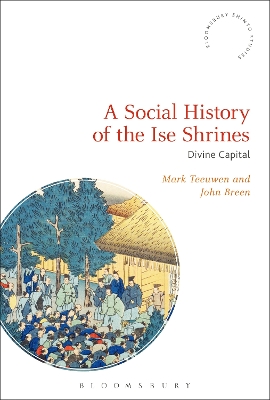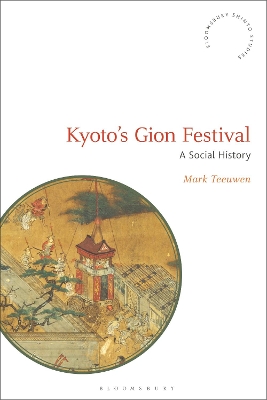Bloomsbury Shinto Studies
2 total works
The Ise shrine complex is among Japan's most enduring national symbols, and A Social History of the Ise Shrines: Divine Capital is the first book to trace the history of the shrines from their beginnings in the seventh century until the present day. Ise enshrines the Sun Goddess Amaterasu, the imperial ancestress and the most prominent among kami deities, and has played a vital role in Japan's social, political and religious history. The most popular pilgrims' attraction in the land from the sixteenth century onwards, in 2013 the Ise complex once again captured the nation's attention as it underwent its periodic rebuilding, performed once every twenty years.
Mark Teeuwen and John Breen demonstrate that the Ise Shrines underwent drastic re-inventions as a result of on-going contestation between different groups of people in different historical periods. They focus on the agents responsible for these re-inventions, the nature of the economic, political and ideological measures they took, and the specific techniques they deployed to ensure that Ise survived one crisis after another in the course of its long history.
This book questions major assumptions about Ise, notably the idea that Ise has always been defined by its imperial connections, and that it has always been a site of Shinto. Written by leading authorities in the field of Shinto studies, this is the essential history of Japan's most significant sacred site.
Mark Teeuwen and John Breen demonstrate that the Ise Shrines underwent drastic re-inventions as a result of on-going contestation between different groups of people in different historical periods. They focus on the agents responsible for these re-inventions, the nature of the economic, political and ideological measures they took, and the specific techniques they deployed to ensure that Ise survived one crisis after another in the course of its long history.
This book questions major assumptions about Ise, notably the idea that Ise has always been defined by its imperial connections, and that it has always been a site of Shinto. Written by leading authorities in the field of Shinto studies, this is the essential history of Japan's most significant sacred site.
This book focuses on the long history of what is arguably the most prestigious and influential festival in Japan – Kyoto’s Gion festival. The book explores this history from the festival’s origins in the late 10th century to the 21st century, drawing on Japanese historical studies and archival materials as well as the author's participant observation fieldwork.
Whilst research to date has focused on Shinto ideas and rituals, Kyotos' Gion Festival is the first to focus on this famous Shrine festival and demonstrates the importance of shrine festivals in understanding Japanese religion. Covering both historical and contemporary perspectives, it includes discussion of the festival's status as a UNESCO Intangible Cultural Heritage, the interplay of religion and tourism, as well as its symbol of national unity.
Whilst research to date has focused on Shinto ideas and rituals, Kyotos' Gion Festival is the first to focus on this famous Shrine festival and demonstrates the importance of shrine festivals in understanding Japanese religion. Covering both historical and contemporary perspectives, it includes discussion of the festival's status as a UNESCO Intangible Cultural Heritage, the interplay of religion and tourism, as well as its symbol of national unity.

